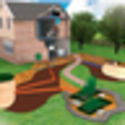-
About
- About Listly
- Community & Support
- Howto
- Chrome Extension
- Bookmarklet
- WordPress Plugin
- Listly Premium
- Privacy
- Terms
- DMCA Copyright
- © 2010-2025 Boomy Labs

 Rob Gabriel
Rob Gabriel
Listly by Rob Gabriel
For those not on the mains, many treatment options can be considered. Some of these could be of interest to people who are on the mains, but want to reclaim some of the nutrients they are currently flushing away. Treating sewage usually involves a combination of different methods to separate out solids, deal with pathogenic (disease carrying) organisms, and remove nutrients.
The Sewage Treatment Plant process is similar to the way in which the septic tank works, but the mechanical components provide a process to help break down materials, as it is tough to produce cleaner, more environmentally friendly wastewater. It then leaves the final chamber, ready to be discharged into local watercourses, ditches or drainage land-based systems to the approval of the Office of Environmental Protection.
Several kinds of package treatment plants are available. These carry out primary and secondary treatment in compact units, and so produce a cleaner effluent than a septic tank. However, these usually require some kind of power supply – if so, they will be more costly to install and run, and not necessarily more environmentally friendly. Other treatments alongside reed or willow beds, septic tanks and leach fields are trickling filters, solar ponds, living machines, and compost toilets.
Onion Tanks are a unique short-term solution, the portable tank is designed to be able to take the tank on the remote control or complicated place that will be used for water or other liquid storage. Onion tanks are designed for continued use and last a very long time, if well cared for. Onion tanks are designed for portable tanks that can be carried in a net and easily moved. They are not designed for transporting water.
Similar to the onion tank are the granular backfill septic tanks, which can save up to 50% on installation cost. Granular backfill septic tanks are marginally more costly than the typical onion septic tank, but on average save up to 50% on installation.
Vertical flow reed beds are another kind of secondary treatment. The effluent from a septic tank (or similar) is percolated through a tank containing layers of sand and gravel planted with reeds. The reeds help bacteria to break down the pollutants and make the beds attractive to wildlife. Horizontal flow reed beds are usually a third stage of treatment, used after other systems when a high level of treatment is needed.
A common secondary treatment system is a leach field. This is a system of perforated pipes laid in underground gravel trenches. They are unsuitable for very clay soils or areas with a high water table. The liquid effluent percolates through the gravel, where solids are removed and digested by micro-organisms, leaving the liquid clean enough to filter into groundwater.
Cesspools tend to be used when conditions prohibit a secondary treatment system; they have no outlet and so need emptying every few weeks, making them expensive to run.
The first stage (primary treatment) is the separation of most of the solids from the liquid effluent, usually by some kind of settlement chamber. The most common example is the septic tank. These are a robust and economic option if used properly. Most of the solid material will either sink (as sludge) or float to the top (as crust), leaving the effluent between to flow out to a secondary treatment stage.
In a septic tank, some breakdown of solids by bacteria takes place, but they will gradually build up over time and need removing occasionally (a process known as desludging). No additives should be needed to make your septic tank operate properly. People occasionally tell us of tanks that have never been emptied, but this will be either due to a hole in the tank (which could mean the solids are being eaten by rats), or because solids are washing into the leach field (this can lead to a blockage, a bad smell, and a costly rescue operation).
